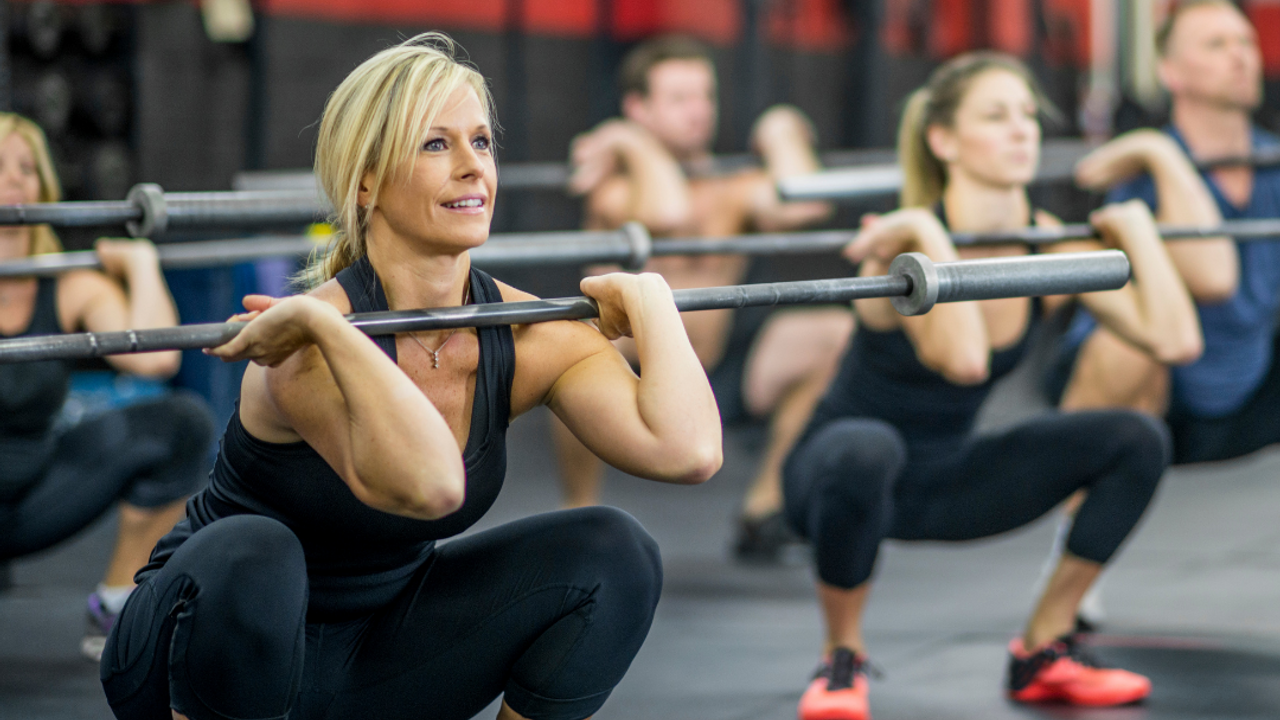Debunking Myths About Squats
Squatting is a functional human movement. You squat whenever you sit or stand from the couch, toilet, or work chair. Multiple variations are used in fitness programs. Squatting is a component of several Olympic weightlifting and CrossFit exercises, such as thrusters, squat cleans, and squat snatches. Squats can improve athletic performance, especially jump distance and height.
There are a lot of misconceptions about squats, mostly from fear-inducing healthcare providers and a lack of knowledge. We have had enough evidence surface to debunk some of the myths out there, but not everyone has this information.
Here are 4 of the most common myths about squatting that I hear regularly:
1. Your knees should not go past your toes.
This is an old school way of thinking. Restricting the mobility in your ankle will cause unwanted consequences up the chain.
Restricted squats resulted in increased hip torque and increased forward trunk lean. Restricting tibial advancement leads to greater relative loads on the hips and low back. Appropriate loading of all joints may require the knees to go past the toes. This was confirmed by Fry, Smith, and Schilling in 2003.
A study by Hartmann, Wirth, and Klusemann in 2013 demonstrated that restricted squats elicit greater anterior shear forces on intervertebral discs and cause tensile forces on intervertebral ligaments. The recommendation of not letting your knees move past your toes is based on the misinterpretation of existing data and should be removed in future practical literature.
2. Squatting below parallel is bad for your knees.
Deep squats are in fact safe for most people. The notion that you should restrict your squats to parallel or less than parallel to reduce risk of injury is not supported by evidence. There are certain circumstances that would lead me to restrict one’s squat depth, such as recent knee surgery or intolerance to a deep squat due to pain. Limb length also plays a role in the depth at which someone can squat properly.
The study by Hartmann, Wirth, and Klusemann in 2013 that I mentioned earlier showed that deep squats do not contribute to increased risk of injury to passive tissues (cartilage, bones, ligaments). Deep squats are an effective training exercise to protect against injuries and improve lower extremity strength. Increasing loading leads to positive anabolic adaptations that are protective against degenerative changes. Athletes training with deep squats showed greater retropatellar cartilage (cartilage behind the kneecap) thickness and ligamentous (ACL and PCL) cross-sectional area compared with age-matched untrained controls. Retropatellar compression forces are greatest at 90 degrees of flexion. As you squat past 90 degrees, the compressive forces decrease due to load distribution and force transfer.
In a 2013 paper, Bloomquist and colleagues reported deep back squats (120 degrees of knee flexion) resulted in greater anterior thigh cross-sectional area, greater isometric knee extension strength, and greater squat jump performance when compared to shallow squats (60 degrees of knee flexion).
Not only is it safe to squat past 90 degrees, but it is more advantageous to do so. Deep squats are more effective in protecting against injuries, developing lower extremity strength, producing muscle hypertrophy, and improving jumping performance.
3. Your feet must point forward.
Based on individual anatomy, not everybody’s foot positioning and stance width will be the same. Different characteristics such as femur length and rotation during the squat can have a huge impact on the performance of the squat.
A 2018 study by Comfort and colleagues looked at how to optimize the squat. They found that the foot should be in a “natural position.” It is recommended that the squatter utilize a natural stance and foot position rather than a set in stone stance width and foot position to optimize performance due to individual anatomical differences.
Typically, we see about 0-15 degrees of outward rotation of the feet in our athletes. That doesn’t mean that you must fall within that range. Some testing and trial-and-error may be necessary to figure out what the best position is for you.
4. Head position doesn’t matter.
Head position can have a trickle-down effect on our squatting patterns. Looking down while squatting affects trunk position by resulting in increased hip bend. A forward/upward gaze results in a more upright trunk.
That same 2018 study by Comfort and colleagues recommends looking up as you squat. To reduce the lumbar shear forces and maintain an upright trunk, athletes should maintain a forward or upward gaze.
Questions about squats? Shoot me an email at corey@outlasthealth.com.
Corey Hall, PT, DPT

